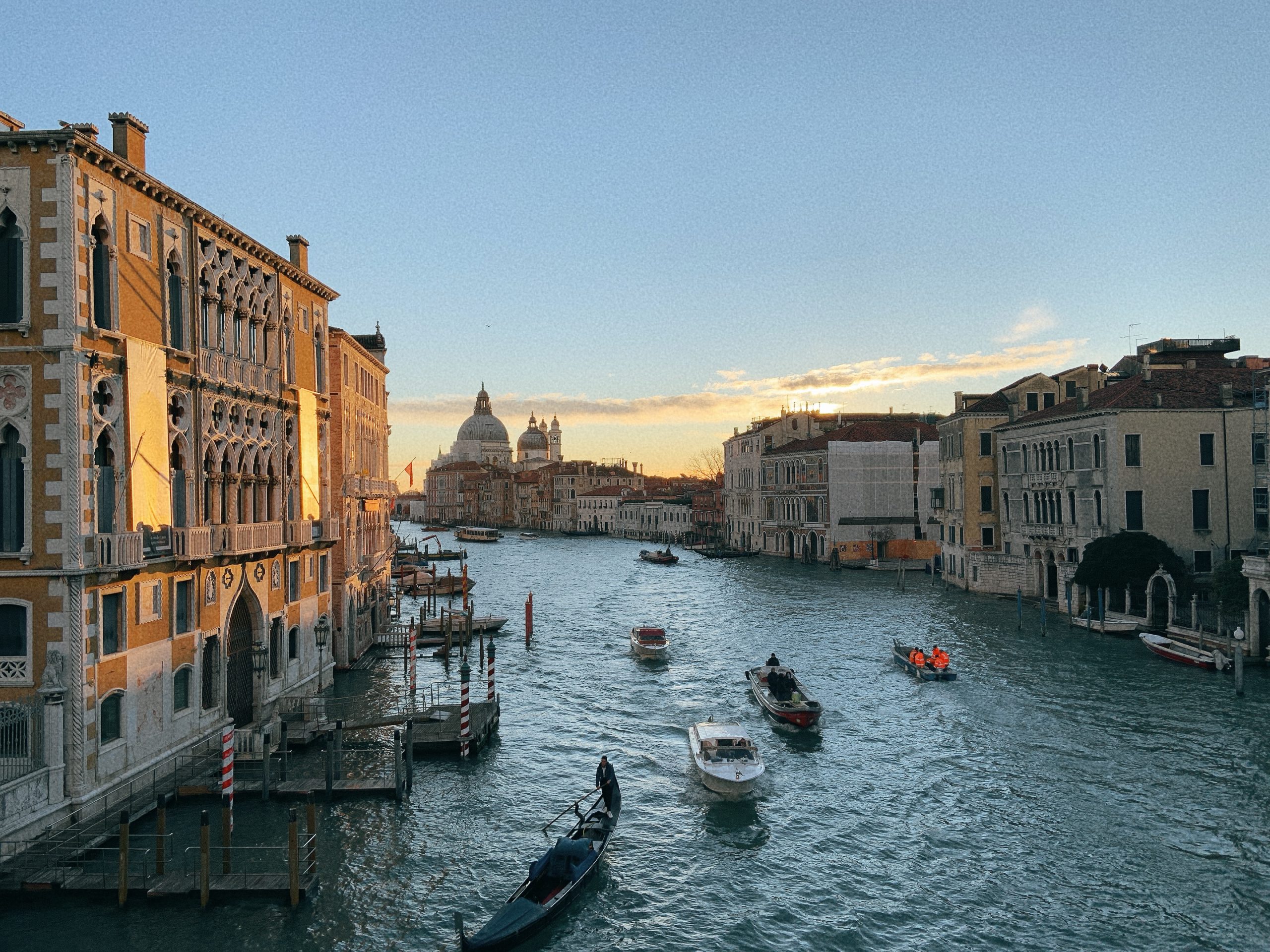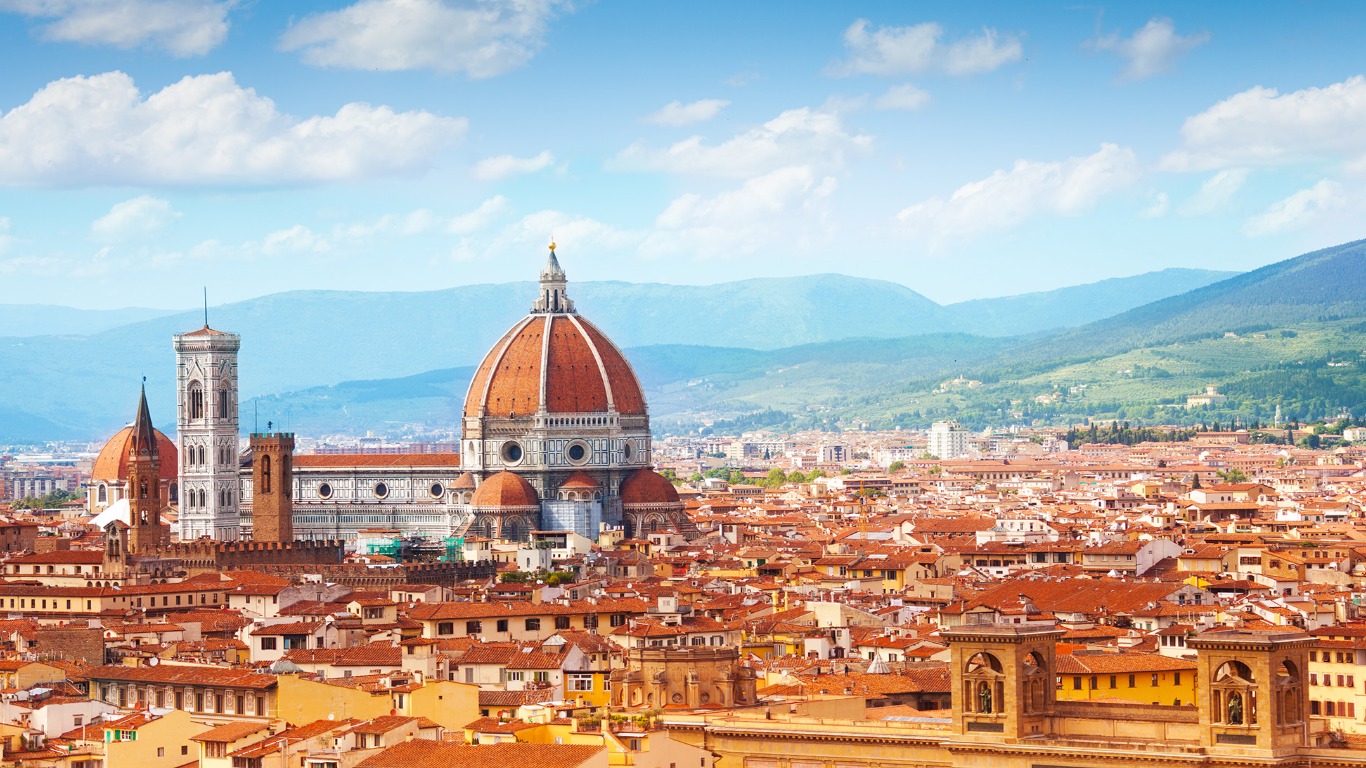

Never was a thoroughfare so aptly named as the Grand Canal, reflecting the glories of centuries of Venetian architecture in the 50 palazzi and six churches lining its banks. At the end of Venice’s signature S-shaped waterway, the Palazzo Ducale and Basilica di San Marco add double exclamation points. But wait until you see what’s hiding in the narrow backstreets: neighbourhood churches lined with Veroneses and priceless marbles, convents graced with ethereal Bellinis, Tiepolo’s glimpses of heaven on homeless-shelter ceilings, and a single Titian painting that mysteriously lights up an entire basilica.


Garden islands and lagoon aquaculture yield speciality produce and seafood you won’t find elsewhere – all highlighted in inventive Venetian cuisine, with tantalising traces of ancient spice routes. The city knows how to put on a royal spread, as France’s King Henry III once found out when faced with 1200 dishes and 200 bonbons. Today such feasts are available in miniature at happy hour, when bars mount lavish spreads of cicheti (Venetian tapas). Save room and time for a proper sit-down Venetian meal, with lagoon seafood to match views at canalside bistros and toasts with Veneto’s signature bubbly, prosecco.


Basilica di San Marco

With a profusion of domes and more than 8000 sq metres of luminous mosaics, Venice’s cathedral is unforgettable. It was founded in the 9th century to house the corpse of St Mark after wily Venetian merchants smuggled it out of Egypt in a barrel of pork fat.

When the original building burnt down in 932, Venice rebuilt the basilica in its own cosmopolitan image, with Byzantine domes, a Greek cross layout and walls clad in marble from Syria, Egypt and Palestine.

Unbelievably, this sumptuous church was the doge’s private chapel. It only officially became Venice’s cathedral in 1807 following the demise of the Republic, replacing the considerably less grand Basilica di San Pietro in Castello.

Inside the church proper, three golden domes vie for your attention. The images are intended to be read from the altar end to the entry, so the first dome you see is actually the last: the Pentecost Cupola, with the Holy Spirit represented by a dove shooting tongues of flame onto the heads of the surrounding saints. In the central 13th-century Ascension Cupola, angels swirl around the central figure of Christ hovering among the stars.



Entrance to the Basilica is €3, and you can also book ‘Skip the Line’ tickets online for an additional €3 (children under 5 enter free of charge). You’ll need to dress modestly (ie knees and shoulders covered). If you do not mind waiting in line to wait, then there is no need to book ‘Skip the Line’ tickets. Even though there were many tourists ahead of us, the queue was orderly and we took about 20 minutes to enter the church.
Piazza San Marco

This grand showpiece square beautifully encapsulates the splendour of Venice’s past and its tourist-fuelled present. Flanked by the arcaded Procuratie Vecchie and Procuratie Nuove, and two of the city’s top sights – Basilica di San Marco and Museo Correr – it’s filled for much of the day with admiring tourists. As you can see from the pictures, the main square is flooded. When we visited the square the previous night, it was totally dry. However, this is a known phenomenon and the local authorities had already put in place boardwalks. For those who do not mind wading through the waters, you can wear some wellies or even buy the plastic shoe coverings from the entrepreneurial street vendors. For a few days each year, between the months of October and January, Venice’s water levels rise and parts of the city flood. When acqua alta (“high water”) occurs, Saint Mark’s Square, the lowest point in the city, briefly becomes one with the lagoon.

What is acqua alta?
When an astronomical tide coincides with a strong south-east wind, low air pressures and the Adriatic’s oscillating currents, the water level in Venice rises and this causes flooding in the lower areas of the city. This is known as acqua alta, which is not to be confused with an actual flood since it is a completely natural and normal occurrence. The water levels gradually rise by no more than a few centimetres and only last for a couple of hours before the tide goes out and the water levels in the canals return to normal.
How to ride on a gondola?

Are you looking for a cheap way to ride a gondola along the canals in Venice. If you are on a honeymoon or if you feel like splurging, you can hire a private gondola at €80. The gondola can easily fit 4-5 people including the boatman. However, this is a huge sum to pay and only those who want to go it for the ‘gram would indulge in this. For a local alternative, you can take one of the many Traghettos that ply along the Grand Canal, which cost only €2. This route only crosses the width of the canal, saving you time from walking a long way. It is also a good way to experience the canals. Another alternative is the vaporetto, which is a public waterline and it cost €7.50, where you can make unlimited trips within 75 minutes. For those who plan to make use of the vaporetto extensively or to visit the nearby islands of Murano and Burano, they can get the one-day pass at €20 or a two-day pass at €30.
There are 19 scheduled lines that serve locales within Venice, and travel between Venice and nearby islands, such as Murano, Burano, and Lido. You can use the vaporetto if you want to spend 45 minutes or so cruising up or down the Grand Canal on the No. 1 vaporetto line, which allows you to take in the sights and sounds of the canal, without forking out too much for the gondola.

On our last day, we used the vaporetto to make our way from Piazza San Marco to Piazaa Roma for the bus terminal, as we did not want to drag our luggages up and down the bridges, over canals and save the hassle of figuring our way around the narrow alleys.

Santa Maria di Nazareth Church
This is a Stately Catholic church from 1680 featuring a Baroque altar, painted canvases & frescoes. Located near the Santa Lucia Railway Station, near the Ponte degli Scalzi, the church is an authentic masterpiece of the late Venetian Baroque, and represents an unmissable destination for your “tourist pilgrimage to Venice”. The construction of the sanctuary began in the 18th century. After some initial difficulties, the religious purchased gardens along the Grand Canal in the area of Santa Lucia in order to finally build the much desired church and monastery.

Basilica S.Maria Gloriosa dei Frari
The Basilica is a treasure chest of art and faith. The Basilica is commonly known as the Frari. It’s plain and expressionless exterior contrasts with its majestic interior. The construction of the church took nearly one hundred years to build and was completed in the mid-fifteenth century. Its bell tower dates from the fourteenth century and is the second tallest campanile in Venice. The highlight of the Basilica and what will draw your attention as soon as you walk into the temple is a painting by Titian called “Assumption of the Virgin”. It is situated in the main altar surrounded by stained glass windows.
Rialto Bridge
The Rialto Bridge is the oldest of the four bridges to cross the Grand Canal of Venice. It is also the most famous in Venice thanks to its peculiar history and design. For many years, the overpass was the most important financial centre in Venice. This is an important landmark in the city of Venice because it is widely used by locals and tourists on a daily basis. There are some souvenir shops on the bridge and the surrounding area, but most importantly, it is a main passageway used to cross the Grand Canal.
If you pass over the bridge from Piazza San Marco you will come across the Rialto Market, a colourful market packed with delicious looking fruit and vegetable. It also includes a fish market. If you visit Venice in summer you will surely be tempted by the trays of fresh fruit on sale in some of the market’s stands.

Food and Drinks
Venice is the capital of the Veneto, which is one of Italy’s most culinarily diverse regions, taking in the alpine foods from the Dolomites to the seafood-rich Venetian cuisine.
We ate dinner at Osteria Al Portego. It is a cozy Venetian wine bar with a counter for traditional cicchetti, plus a range of regional wines. Be prepared to wait in line if you did not make a reservation, or you can also stand around the bar counter with a drink and munch on some small bites.
Address: Calle de la Malvasia, 6014, Venice.



Overall, we enjoyed the local vibes of this lively osteria, tucked away in a nondescript part of Venice, away from the tourist crowds. We had a small issue trying to navigate our way to the restaurant using Google Maps, but finally we managed to locate it. The food portions are quite big and the prices are reasonable. They serve typical Italian fare, and the menu is old-school, written on a chalkboard and only in Italian. Of course, the waiters in the restaurant do speak some English and can help you with the translation. Some people also highly recommend the spaghetti served here, but we did not order it. The tiramisu was one of the best we had eaten so far in Italy, as it was not overwhelmingly sweet and there was a strong taste of coffee in the dessert.

Last but not least, if you are craving for some Chinese food in Venice, you can also have such steamed buns. We were mildly surprised to see these cute little buns but shocked at the price. Of course we did not buy them, but it was a good description of what each bun contained.
Where to sleep?
We stayed at Hotel Grifoni Palace, which is a boutique hotel in the central part of Venice. It is within walking distance to most of the key attractions in the city, about a 15-20 minutes walk to Piazza San Marco for example. Breakfast was included in the room rate and the spread of continental breakfast items was great. There was no key needed to access the hotel, we were given access codes to the main entrance and to our room on the day of our arrival. We found the hotel deal on AirBnb, but it can also be booked on other websites such as Booking.com or Trip.com
Address: Sestiere San Polo 2606, 30125 Venice.



